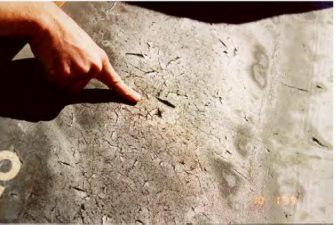There are many system design recommendations to improve belt cover life both from an abrasion and a cut & gouge standpoint, regardless of compound.

From an abrasion standpoint, the following guidelines should be used:
1.The faster the speed of the conveyor, the greater the wear. The material bounces and abrades in the loading zone until it gets up to the same speed of the belt. The higher the relative speed differential, the more wear will occur.
2.The shorter the center to center length of the system, the greater the wear. This is simply due to more cycles per hour.
3.The higher the angle of incline at the loading point of the conveyor, the greater the wear. The higher angle makes it tougher for the material to get up to the speed of the belt (i.e. 15incline conveyor will wear faster than a flat conveyor).
4.The higher the angle of chute, the greater the wear. The more the material is being transferred to a conveyor belt in the horizontal direction instead of vertical, the less the wear. Therefore, a chute with a 30 angle will project the material at a greater horizontal velocity than a chute with a 90 straight down drop,reducing the wear.
5.The higher the drop height, the greater the wear.
6.The higher the feed angle from one conveyor to the next, the greater the wear. This means that a conveyor belt that is fed inline from another conveyor will wear less than one that is being fed at an angle.
7.Scraper tension is critical. Too loose and the material will not be removed from the cover.Too tight and the cover will get worn away significantly faster.
If the material being conveyed is large enough or sharp enough, cut and gouge damage to the cover will occur.From this standpoint, the following guidelines should be used:
1.The higher the drop height, the greater the damage to the belt cover and carcass.Installing bars in the crusher or chute to slow down the material when practical will reduce the material speed and impact energy.
2.Loading fines on to the belt before the large diameter material will reduce impact damage dramatically.The fines absorb the high impact energy, protecting the belt cover.
3.Impact idlers reduce the amount of impact damage to a belt in comparison to impact beds because the belt has more room to deflect.